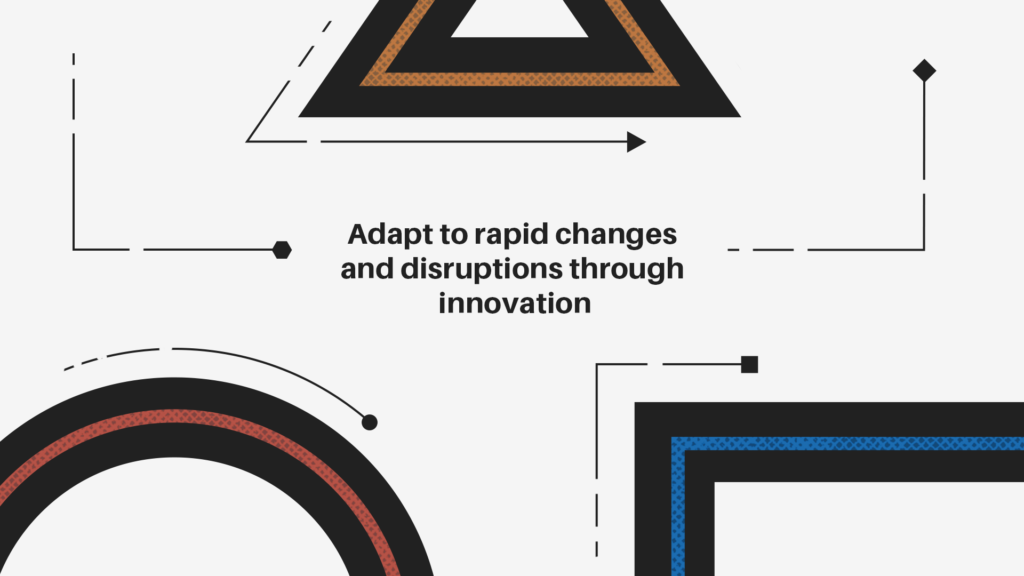Organizations are scrambling to respond and adapt to all the changes and disruptions happening left, right, and center.
And there’s usually not much time to prepare and respond before they’re left in the past by their competitors.
So how do businesses from the world’s largest conglomerates to the newest startups effectively respond to change?
Often, the answer to this is innovation.
How does innovation make an organization more nimble to adapt to change and respond to disruption?
1. Innovation requires you to listen to both current and future developments across economies, markets, and industries.
One of the most crucial steps in any innovation strategy innovation is to do market research and environmental scanning to determine what your potential customers want or need and if your innovation is a match for these.
For example, one way to begin innovating is to find an unsolved problem that you will then develop a solution for.
To do this, you’ll need to collect data about the market you’re going to sell the solution you’re developing. You’ll need to conduct surveys, scan the market, examine historical data, research potential competitors, interview experts, and more.
How does this make your company more nimble?
Somewhere along the way in the process of collecting data and scanning the market, you might find a crisis or disruption headed your way.
This could be in the form of a more attractive product that will steal market share from your own, a new product that will make yours obsolete, an upcoming downturn in the market, and even something completely unrelated that could affect your business like a recession.
Without doing research and scanning the environment, your business could have been taken by surprise. Identifying a crisis or disruption ahead of time gives you time to prepare and adapt, lessening your chance of failure.
And by routinely doing market research and environmental scanning, you’ll be able to spot more potential disruptions and prepare for them adequately. Getting ahead of these means getting ahead of your competition.
2. Innovation systematizes thinking on your toes.
Growing your organization and out-innovating your competition is no easy feat.
An organization is forced to develop solutions quickly in order to capitalize on business opportunities, or else one of its competitors will do it ahead of them. So, having an innovation process is crucial to keep everything organized and on point.
Innovation processes give your organization an organized system to take advantage of opportunities. Importantly, this same innovation process systematizes quickly incorporating learnings into your solutions and encouraging a problem-solving mindset in your team.
Having this process in place takes most of the guesswork out of developing products. It’s like having a step-by-step guide to doing so.
For example, the innovation process under corporate venture building is often centered on solving a problem. This makes innovation teams design solutions, test, and create prototypes with a purpose in mind instead of blindly guessing what to do next.
The result? You’ll be able to solve problems and develop solutions more effectively.
In the long term, having an innovation process will allow you to out-maneuver your competition by being able to capitalize on business and market opportunities ahead of them.
3. Innovation empowers you to develop better products and services.
Innovation is an iterative process.
In whatever innovation you’re currently building or will build, you’ll keep building prototypes, experimenting, and failing, then experimenting again.
This doesn’t make you a bad innovator. In fact, you’ll end up with a refined product or service that the market will love.
One great story of innovative success is the story of the development of the Dyson vacuum.
Its creator, James Dyson, said his team failed 5127 times before developing the iconic vacuum. Because they weren’t deterred by their failed prototypes, they persevered and ended up creating a billion-dollar product.
What can we learn from this? Innovation teaches us to view failure as a stepping stone to success.
There are always learnings in each failure, and incorporating those learnings into your solutions will help you make a better and more competitive product.
4. Innovation inherently de-risks your future.
By being more vigilant, you’ll be able to find new opportunities to grow your business, create solutions that people want and need, and inevitably get to the future ahead of your competition.
One way innovation can de-risk your future is by diversifying your paths to growth and success through corporate venture building.
Corporate venture building is a proven innovation strategy where a corporation builds a new business that will act as an innovation hub for the organization.
By having this newly built venture, an organization will no longer rely on just one stream of growth. Typically, newly built ventures create new revenue streams for an organization while operating independently of the core business.
Having these multiple paths of growth lessens the risk of a single crisis or disruption from taking out your entire business. Now, even if a crisis affects one of the businesses in your organization, you’ll also have others to rely on.
Besides corporate venture building, all of points one to three above show how a company is less prone to failure because of risks, disruptions, and crises.
Your corporation can also benefit from these.
We’d love to talk to you about how we can help you adapt to today’s fast-paced world. Schedule a FREE 30-minute strategy session with our experts today.

